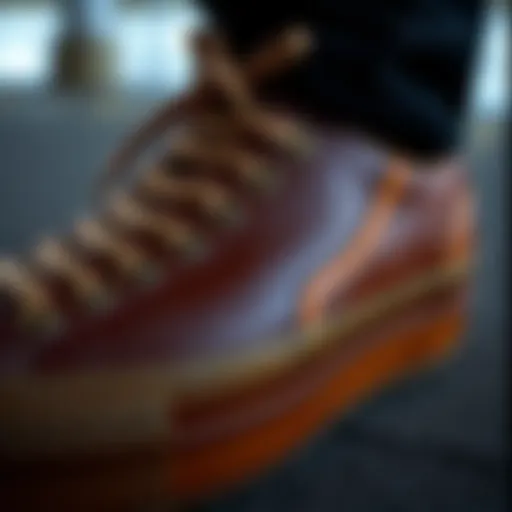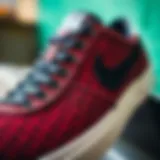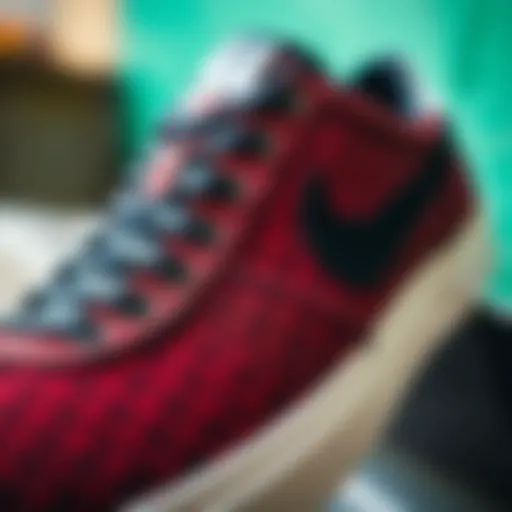Exploring the World of Unisex Graphic Tees


Intro
Unisex graphic tees have made a significant mark in today’s fashion narrative. They represent not just a clothing item but a symbol of cultural evolution and a bridge between diverse identities. Emerging from the backdrop of classic band merch and quirky art, these tees embody a spirit of expression that resonates across different generations. Slowly but surely, they have transcended their initial boundaries, growing into a unifying thread that stitches together various subcultures and styles.
This exploration seeks to unravel the intricate layers of unisex graphic tees. From their beginnings in the early 20th century to today’s sustainable fashion movements, we’ll dissect their role in shaping social attitudes and trends. You might ask why these tees have gained such popularity, and the answer lies in their versatility and ability to challenge traditional gender norms. Like a blank canvas, they invite wearers to showcase individuality through color, design, and choice of accompanying garments.
It’s important to appreciate that behind every graphic tee, there’s a narrative. A simple image or phrase can evoke memories, provoke thoughts, or ignite discussions. Whether worn by skaters testing their limits at the park or fashion-forward influencers navigating the bustling streets, unisex graphic tees serve as a common language.
This journey will analyze key concepts including the origins of graphic tees, their impact on fashion, and the ethical implications linked to their production. Let’s delve deeper into this fascinating topic, understanding how these seemingly simple garments reflect a broader societal change.
Understanding Graphic Tees
Graphic tees are more than just casual garments; they are a fusion of art, self-expression, and fashion that resonates with a broad spectrum of people. In today's dynamic clothing market, understanding graphic tees is essential, particularly in the context of the unisex trend. They serve as a canvas for creativity, allowing individuals to convey their thoughts, interests, and affiliations without uttering a single word. The appeal of graphic tees stretches across ages, cultures, and communities, thus making them a staple in countless wardrobes.
Definition and Characteristics of Graphic Tees
Graphic tees are T-shirts adorned with visual designs, which can range from logos and illustrations to complex artworks or catchphrases. Their uniqueness lies in the combination of fabric and printing techniques. The most common materials include cotton, polyester, and blends that ensure comfort and durability.
When discussing characteristics, several elements stand out:
- Design Variability: Graphic tees can be minimalistic or flamboyant, catering to different tastes. Some may opt for subtle prints, while others embrace bold, loud graphics.
- Fit and Style: They come in various fits, from standard to oversized, allowing for versatility in personal style. This adaptability further enhances their unisex appeal.
- Cultural Significance: Often reflective of societal trends, political statements, or pop culture references, these garments hold meaning beyond their visual appeal.
- Accessibility: Available at various price points, graphic tees are accessible for a broad audience, making them a go-to choice for those looking to express their individuality.
The Role of Graphics in Fashion
In the world of fashion, graphics have taken center stage, acting as communicators of identity and style. Graphic tees serve multiple purposes:
- Conversation Starters: Wearers can spark discussions based on the imagery or text displayed on their shirt.
- Cultural Reflections: They often echo current events and pop culture phenomena, making them a form of wearable social commentary. For example, during movements like Black Lives Matter, specific graphic tees became symbols of solidarity.
- Creative Expression: For many, wearing a graphic tee allows them to showcase their artistic inclinations or personal connections, whether that's a favorite band's logo or a quote from a cherished film.
- Layering Opportunities: These tees are perfect for layering, allowing wearers to mix and match styles, making them suitable for various occasions—from skate parks to casual gatherings.
Graphically bold or subtly stylish, these tees are constantly evolving, taking on new meanings in the ever-shifting landscape of fashion. They are not just a trend; they represent a cultural shift towards authenticity and self-expression, which is paramount in today's society.
The Unisex Trend in Fashion
The unisex trend in fashion reflects a growing acknowledgment and acceptance of gender fluidity in the way we dress. This topic is particularly significant in this article as it provides a lens through which to explore the evolution of graphic tees that have become central to personal expression across genders.
As casual clothing took center stage in the fashion world, unisex clothing emerged as not just a trend, but a response to societal shifts regarding gender norms. The graphic tee, in its myriad of styles and designs, serves as a key player in this movement due to its intrinsic versatility and broad appeal.
Historical Context of Unisex Clothing
The roots of unisex clothing can be traced back several decades. During the 1960s and 1970s, the counterculture movement challenged traditional gender roles, leading to styles that blurred the lines between masculinity and femininity. The introduction of loose-fitting garments and simplified silhouettes made way for greater comfort and freedom of expression. The unisex design mantra began to gain traction as more designers embraced the idea of clothing that was universally wearable.
For example, brands like Benetton and Pride West launched unisex collections that catered to the youthful, rebellious spirit of the time. These garments were not just about style; they were a statement against the rigid fashion norms of preceding generations.
As the decades rolled on, the unisex concept gained momentum, especially in the 1990s when grunge and hip-hop cultures popularized oversized tees and baggy pants. In essence, unisex clothing provided a means for individuals to reject stereotypes and embrace a new form of identity that was less confined by gender.
Contemporary Perspectives on Gender Neutrality
In recent years, the conversation around gender neutrality has gained significant traction, as society increasingly recognizes a spectrum of identities beyond the binary. Fashion brands have responded to this shift by producing unisex graphic tees that appeal to a wider audience. This evolution is not merely about removing gender labels; it’s about acknowledging and representing a diverse range of individual identities.
Contemporary brands such as TomboyX and Wildfang actively promote unisex clothing not just as merchandise but as a movement towards inclusivity. Their graphic tees showcase bold designs that resonate with the ideals of self-expression, empowerment, and acceptance. The conversation around these pieces often extends to themes of comfort and ease, vital for those looking to challenge societal norms.
Moreover, social media has played an essential role in propelling the unisex trend forward. Platforms like Instagram and TikTok allow individuals to showcase their unique styles, inspiring a community that embraces diverse gender expressions.
"Unisex fashion speaks to a universal truth: that clothing should fit the body and the spirit, not a rigid gender profile."
The unisex trend, especially illustrated in the realm of graphic tees, stands as a testament to the ongoing evolution of fashion. It reflects the cultural shifts and provides an avenue for authentic expression, enabling individuals of all identities to wear their values on their sleeves—literally.
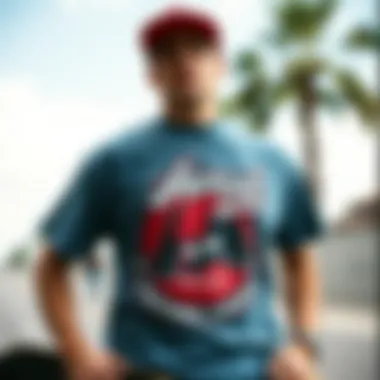
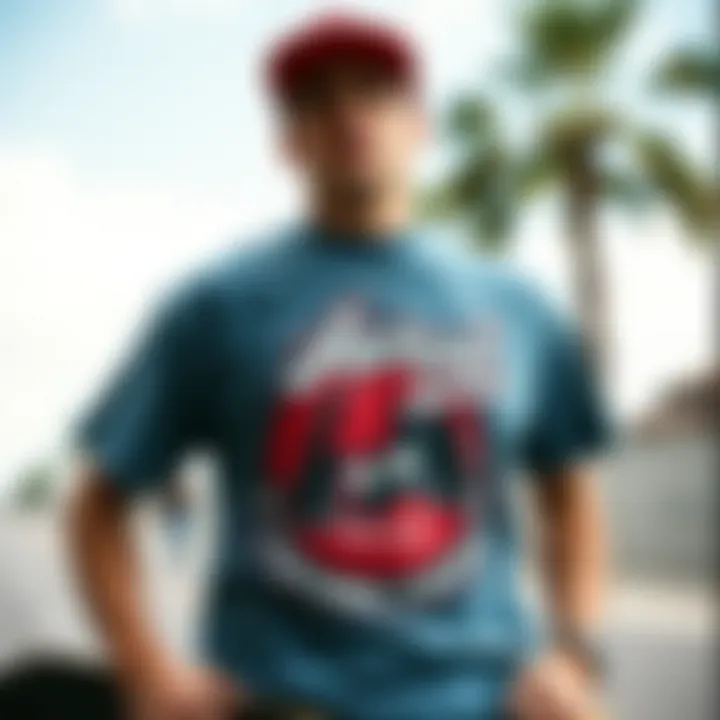
Design Evolution of Graphic Tees
The journey of graphic tees is not just about fabric and ink; it’s a narrative woven through time, media, and cultural sands. This section serves as a vital cornerstone of our examination of unisex graphic tees, revealing how their design has evolved to reflect shifting societal norms and artistic expressions. Each era has left its fingerprints on these garments, adapting them into something that not only serves as clothing but also as canvases for self-expression and commentary.
Decades of Design: From Vintage to Modern
To appreciate the graphic tee in its current form, one must take a stroll down memory lane, through the decades that have shaped its aesthetics and significance.
In the 1970s, graphic tees burst onto the scene, primarily influenced by counterculture movements. Consider the bold, oversized designs of the iconic rock bands. Led Zeppelin, The Rolling Stones, and even Elvis Presley made their mark with loud colors and striking images, designed not just to showcase the band, but to resonate with a generation seeking rebellion. This vintage vibe majority of the time meant organic cotton fabrics, screen printing techniques, and an unmistakably gritty feel.
As we transitioned into the 1980s, graphic tees became a form of portable advertising. Brands like Nike and Adidas mastered the craft of integrating their logos seamlessly into designs, creating not just clothing but statements of lifestyle. During this time, tees featuring slogans and catchphrases saw popularity, reflecting the rise of consumerism and the "buy the brand" mentality that permeated culture.
Fast forward to the 1990s and early 2000s, where the grunge movement took center stage. Think of Nirvana and Pearl Jam. The aesthetic shifted towards vintage band tees that told stories of rebellion, angst, and a desire for authenticity. Graphic designs became less polished and more hand-drawn, reflecting a sense of DIY culture that reigned supreme. T-shirts were thrifted, worn, and shared, sending a message of eccentricity and individuality.
Now, as we stroll into the modern era, the graphic tee has adapted yet again. Contemporary designs often merge technology with creativity. Digital printers and advanced graphic software have given rise to intricate, detailed designs that can be produced at scale. Artists and designers are now collaborating across borders, bringing global influences into local streetwear and making graphic tees more than just fashion statements – they’re works of art in their own right. With the rise of influencers and social media platforms like Instagram, graphic tees have found new visibility, allowing *brands like Supreme and Off-White to become household names.
"Graphic tees have progressed from mere fashion pieces to vital components of personal identity; they have become reflections of who we are and what we stand for."
Influence of Pop Culture on Graphic Design
Pop culture has arguably been one of the dominant forces influencing graphic tee designs throughout the years. The connection between music, film, and graphic tees is undeniable. From Star Wars motifs to Disney characters, graphic tees serve as platforms for fandom.
One can hardly discuss graphic tees without mentioning the significant impact of movies. The rise of blockbusters in the late 20th century propelled designs featuring iconic films and characters.
- "Just Do It" slogans from athletes and sports icons have become symbols of empowerment and motivation.
- Graphic tees featuring Marvel heroes encapsulate the superhero craze, merging identity with admiration.
- Television shows, like Friends, have also spawned a rich vein of designs that resonate with fans.
In an age dominated by social media, viral memes and trends have rapidly led to the creation of graphic tees that capture moments in time. From well-known catchphrases to simple illustrations on popular topics - these tees reflect today's conversations, values, and humorous takes on modern issues, all designed for maximum visibility and impact.
Through decades, graphic tees have quite literally worn the fabric of cultural history and identity. They tell stories of youth, rebellion, and evolving identities while interweaving global influences with personal narratives, ensuring the graphic tee remains not just a staple but an evolving icon in fashion.
Materials and Production Process
In the realm of unisex graphic tees, the materials and production process form the very backbone that supports not just the quality of the garments but also the ethical implications of their production. Understanding these components allows consumers to make informed choices that align with their values and style preferences. When a tee bears a design, it’s not just about the visual appeal; the materials involved can make or break the wearability, durability, and ultimately, the user’s experience.
Common Fabrics Used in Graphic Tees
When diving into the fabrics commonly employed in the creation of graphic tees, a variety of materials come to the forefront:
- Cotton: This classic fabric is widely favored for its breathability and softness. Organic cotton has gained traction due to its low environmental impact, as it is grown without harmful pesticides and fertilizers.
- Polyester: Often used for sports or performance tees, polyester offers moisture-wicking properties that make it ideal for active lifestyles. This synthetic material is versatile, durable, and retains its shape well after washing.
- Blends: A mix of cotton and polyester often gives the best of both worlds. These blends are soft yet strong, allowing for vibrant graphic prints while ensuring comfort and longevity.
- Bamboo: This eco-friendly option is becoming increasingly popular due to its sustainable properties. Bamboo fabric is naturally breathable and has antibacterial qualities, making it a fresh choice for graphic tees.
Each fabric has its own set of characteristics affecting how the graphic design interacts with the material. Cotton absorbs ink well, resulting in vivid prints, while blends may offer better elasticity.
Sustainable Practices in Production
In today’s climate-conscious world, sustainable practices in the production of graphic tees have shifted from being optional to essential. Consumers, especially younger generations, actively seek brands that prioritize sustainability. Some key practices include:
- Eco-Friendly Dyes: Traditional textile dyes can be harmful to both the environment and human health. Brands focusing on sustainability are turning to water-based dyes or natural dyes derived from plants and minerals.
- Ethical Labor Practices: The production of graphic tees often takes place in various locations around the world. Brands that engage in fair labor practices ensure that workers are paid a living wage, work in safe conditions, and are treated with respect. This transparency can resonate strongly with consumers who value ethics in their clothing choices.
- Recycling and Upcycling: Some companies are adopting practices that involve recycling old garments or materials to create new tees. This not only reduces waste but also contributes to a circular economy.
"The future of fashion is not just in what we wear, but in how it is made."
As consumers, choosing graphic tees made with such practices helps push the industry toward a more sustainable future. The rising popularity of eco-conscious choice signifies a shift in consumer awareness and demand for responsible fashion.
By examining the materials and production processes behind unisex graphic tees, individuals can better appreciate the choice they make when purchasing these garments. The blend of comfort, style, and ethics entwined in these tees echoes beyond fashion, making a statement about who we support with our buying power.
For more insights on fabric technology, check out Wikipedia and for ethical fashion practices, visit Britannica.
Styling Unisex Graphic Tees


Styling unisex graphic tees is not merely about throwing on a shirt with an eye-catching design; it is an art form that speaks volumes about personal expression, lifestyle, and even social trends. These tees serve as a canvas where culture, identity, and creativity can collide. With their growing popularity in today's fashion landscape, understanding how to effectively style these versatile garments can transform an ordinary outfit into a powerful statement. The importance of this topic lies not just in aesthetics, but also in the way these tees empower individuals to express their values, interests, and personal flair.
Combining with Different Wardrobe Essentials
Effectively combining unisex graphic tees with various wardrobe essentials can create a dynamic and stylish look suitable for multiple settings. Pairing these tees with different bottoms like jeans, shorts, or even skirts can highlight the wearer's individuality and adaptability.
- Jeans: For a relaxed vibe, classic denim, whether it's skinny, relaxed fit, or wide-leg, can provide a chic contrast to bold graphic designs. A graphic tee tucked into high-waisted jeans can redefine a simple silhouette.
- Layering: In cooler months, layering is a savvy way to enhance style. Think about a graphic tee under a bomber jacket or a denim jacket. The juxtaposition of textures and styles can add a thoughtful dimension to an outfit.
- Athletic Wear: For those who appreciate a more sporty look, pairing a graphic tee with joggers or stylish leggings can be both comfortable and trendy. This mix is popular among skaters and athletes alike, offering a function-meets-fashion aspect.
The beauty of unisex graphic tees lies in their capacity to complement various clothing styles. Whether it’s dressed up or down, these tees can fit seamlessly into different wardrobes.
Accessorizing for Maximum Impact
Accessorizing is the final touch that can elevate the styling of unisex graphic tees from simple to stunning. Thoughtful accessory choices can reflect one’s personal style, draw attention to the graphic, or simply complete the overall look.
- Jewelry: Layering necklaces or sporting statement earrings can bring an air of sophistication even to a casual tee. Simple chains can add a touch of elegance, while chunky earrings can create a playful contrast.
- Bags: Choosing the right bag can further express one's personal aesthetic. A sturdy backpack can echo a sporty vibe, while a crossbody bag can add a chic flair.
- Footwear: The choice of shoes can completely flip the energy of an outfit. Sneakers can underscore a casual and laid-back feel, while boots or loafers can offer a smarter, edgier appearance.
Incorporating accessories isn't just about looks; it expands the versatility of wearing graphic tees. Depending on the context, the same tee can feel like an entirely different outfit with the flip of a few accessories.
Ultimately, styling unisex graphic tees should be viewed as a personal journey of expression. As individuals navigate their fashion choices, these tees offer an exciting opportunity to mix, match, and redefine norms, aligning perfectly with modern values of inclusivity and authenticity.
The Cultural Impact of Graphic Tees
Graphic tees are not just articles of clothing; they serve as powerful canvases expressing ideas, beliefs, and personalities. Their rise in popularity reflects a broader cultural shift where individual expression takes center stage. This section explores the significance of graphic tees in society and how they foster representation and identity through fashion.
Representation and Identity Expression
In today's diverse society, graphic tees have become a vital medium for individuals, particularly the younger generation, to express their identities and beliefs. With an array of designs ranging from social and political slogans to artistic depictions, graphic tees act as wearable statement pieces. They offer a way for individuals to proclaim their affiliations—be it a band they adore, a cause they champion, or a cultural background they wish to highlight.
“Clothing is a form of self-expression, and graphic tees allow us to articulate who we are without saying a word.”
The impact of representation in fashion should not be underestimated. For example, graphic tees featuring LGBTQ+ themes or social justice messages resonate particularly with marginalized communities, providing visibility and fostering inclusiveness. Such designs challenge stereotypes, allowing wearers to express pride in their identities. In doing so, the tees do not merely reflect personal choices; they also contribute to a broader dialogue about representation in media and culture.
Moreover, the customization of graphic tees plays a significant role in identity expression. Brands like Custom Ink or Spreadshirt enable individuals to create personalized graphics, turning a simple shirt into a unique expression of their personality or beliefs. This level of personalization reinforces the connection between the wearer and the garment, transforming clothing into a narrative medium.
Graphic Tees in Subculture Movements
The cultural significance of graphic tees extends into various subculture movements. From punk to hip-hop, graphic tees have been instrumental in marking identities, fostering unity, and conveying messages. In such environments, a simple t-shirt transcends its function, becoming a symbol of allegiance and attitude.
For instance, during the rise of punk rock, graphic tees adorned with band logos and anti-establishment slogans articulated rebellion against mainstream norms. Bands like The Ramones or The Sex Pistols utilized this medium to visualize their ethos, further stitching music into the fabric of social movements. Punk enthusiasts donned these tees not just as fashion choices but as badges reflecting their values and alliances.
Additionally, graffiti artists have utilized graphic tees to bring street art into mainstream fashion. By featuring art that challenges traditional frameworks, these tees give a voice to artists whose work typically exists in marginalized spaces. Illustrators like Banksy or Shepard Fairey have partnered with brands to create varied designs that reach admired status beyond art galleries and into everyday life.
In the realm of skate culture, brands like Thrasher and Supreme harnessed the graphic tee's power to mold collective identity within the community. Their designs not only represent a culture but also drive significant trends in athletic and casual wear, showcasing how deeply intertwined graphic tees are with skateboarding's ethos.
The cultural impact of graphic tees is profound, serving as a vital medium for representation and fostering community identity. As fashion continues to evolve, these garments will likely remain critical in reflecting societal changes, allowing wearers to articulate their stories while making bold statements about who they are and what they stand for.
Consumer Trends and Market Analysis
Consumer trends in the clothing market, particularly in the realm of unisex graphic tees, showcase a significant shift in how society perceives and utilizes fashion. This analysis sheds light on the underlying motivations driving purchase decisions, preferences regarding design and fit, and the emerging demographic segments that have embraced these garments. Understanding these trends not only aids manufacturers and retailers in targeting their offerings effectively but also provides insight into the cultural currents that define modern fashion.
Demographics and Target Markets
The landscape of unisex graphic tees is shaped by various demographic factors. Young adults aged 18 to 35 are the primary consumers, drawn in by the casual nature of these tees and their ability to express individual identity. This age group often seeks clothing that reflects their personality, beliefs, and values—essential criteria when selecting graphic tees. Research shows that nearly 60% of consumers in this cohort prioritize brands that align with their social and environmental consciousness.
Key demographic insights include:
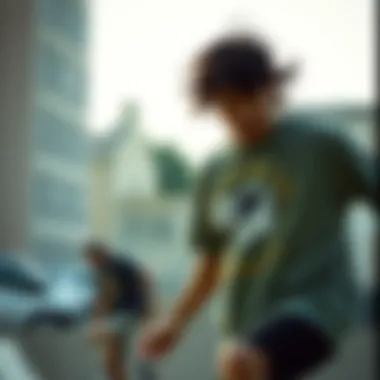

- Gender Fluidity: The blurred lines between traditional gender categories mean many individuals are keen on clothing that doesn’t strictly adhere to gender norms. This trend is particularly prominent in urban settings.
- Cultural Influences: Youth cultures, such as skateboarding communities and music subgenres, have popularized certain graphics or slogans that resonate deeply within those groups.
- Eco-Consciousness: A growing segment of shoppers is increasingly interested in sustainable fashion. They actively seek out brands that demonstrate ethical practices, such as using organic materials or practicing fair labor standards.
E-commerce Evolution and Sales Strategies
The rise of e-commerce has revolutionized how unisex graphic tees reach consumers. With online shopping becoming the norm, brands are leveraging digital platforms to not only sell but also tell a story. The ability to view and purchase a variety of styles from the comfort of one’s home has opened avenues for retailers to tap into global markets.
Essential strategies include:
- Targeted Advertising: Utilizing data analytics to craft personalized marketing campaigns helps brands reach the right audience. For example, social media ads tailored to interests in punk music or street art can draw in a targeted demographic eager for related apparel.
- Influencer Collaborations: Collaborating with influencers can significantly enhance brand visibility. When a respected figure in the skateboarding community wears and promotes a specific graphic tee, their followers are more likely to engage with the brand.
- Customer Engagement: Interactive websites that allow consumers to customize designs or share their style can foster a deeper connection, as people often appreciate being part of the creative process.
"Fashion is not just about clothes but about culture, identity, and values that connect us as individuals."
For more insights on demographics and market trends, you can refer to Wikipedia's article on Fashion or explore additional resources at BRITANNICA.
This focus on understanding the market will help brands remain relevant and appealing to their audience, navigating the complexities of modern consumer behavior.
Challenges in the Graphic Tee Market
The graphic tee market, especially when it comes to unisex designs, faces an array of challenges that both producers and consumers grapple with. Understanding these challenges is vital for various stakeholders in the fashion industry—from brand designers to casual buyers. Grappling with qualities such as price, uniqueness, and market saturation are crucial considerations. This section will dive into two major hurdles: the balance of quality against affordability and the issue of market saturation alongside unique selling propositions.
Quality vs. Affordability
When we talk about graphic tees, one significant tension exists between quality and affordability. Consumers often desire stylish and durable products that can withstand the test of time. However, many brands that focus on high-quality materials and production processes tend to price their products on the higher end. This is where many brands stumble.
For example, a tee made from 100% organic cotton has undeniable advantages, like breathability and softness, but it usually comes at a premium price. Consumers may feel hesitant to spend money on something they view as a mere piece of casual wear.
On the flip side, brands that provide low-cost options often compromise on quality. This can lead to graphic tees that fade quickly, shrink after a wash, or worse, feel uncomfortable against the skin. Consequently, this can also impact a brand's reputation in a crowded marketplace.
To strike a balance, companies are exploring various sustainable practices and more efficient production methods. By adopting technologies that reduce waste and employing better sourcing techniques, they can potentially offer consumers quality products without breaking the bank.
"A fine balance lies between giving consumers lasting quality and ensuring that they don’t take a baleful stare at the price tag."
Saturation and Unique Selling Propositions
The graphic tee market is overflowing with options. It’s as if every corner of the market has a new design cropping up, adding to the existing jumble. This saturation can make it difficult for any one brand to stand out, especially for newcomers who lack recognition. In a saturated market, the key to survival is often rooted in having a clear unique selling proposition (USP).
A USP differentiates a brand from its competitors, providing reasons for consumers to choose one over the other. It could be a specific artistic style, a story behind the graphic, or even a commitment to ethical production. Brands that fail to carve out a niche can find themselves lost in the noise.
For instance, consider brands that double down on activism or social justice. Some companies produce graphic tees that promote environmental awareness, featuring designs made from recycled materials. Such initiatives not only resonate with conscious consumers but also add value to the products themselves.
In contrast, brands that rely solely on generic imagery often find it hard to attract a loyal customer base. The challenge lies in finding that balance between appealing to a broad audience while also staying authentic to one’s identity and ethos.
Future Projections for Unisex Graphic Tees
The unisex graphic tee market is on a steady uptick, much like a skateboarder finding their footing on a new board. As society increasingly embraces gender neutrality, these tees are uniquely positioned to ride the wave of cultural transformation. Not only do they offer a blank canvas for expression, but they also bridge the gap between casual comfort and personal style. This section aims to illuminate predicted trends and technological advances that could shape the future of unisex graphic tees.
Predicted Trends in Design and Wearability
As we look ahead, several design trends are surfacing that are likely to influence unisex graphic tees. One significant direction is the move towards more inclusive sizing and styles. Brands are starting to recognize that consumers are diverse, and a one-size-fits-all approach just doesn't cut it anymore. Expect graphic tees to offer a broader array of sizes, cuts, and fits, accommodating all body types comfortably.
Moreover, sustainability is becoming increasingly important to consumers, especially the younger crowd who drives much of the graphic tee market. Eco-friendly materials, such as organic cotton and recycled polyester, are not just buzzwords anymore—they're becoming the norm. In addition, dyeing processes that are less harmful to the environment are gaining traction, making these garments more appealing to the conscientious buyer.
The resurgence of retro designs, particularly from the 90s and early 2000s, is another trend worth noting. Illustration styles reminiscent of this era are prevalent, appealing to nostalgia. Graphic elements might include grunge, pop culture references, and bold typography. An example is the growing popularity of oversized tees with large, striking graphics that evoke a sense of individuality. Expect to see these as staples in casual wardrobes.
Finally, wearability is shifting as multifunctional apparel captures attention. Graphic tees are no longer just for casual outings. They are styled in versatile ways: layered under blazers, paired with skirts, and even worn for workouts. Such adaptability brings a fresh twist, allowing individuals to showcase their unique taste wherever they go.
Technological Advances in Textile Production
The textile industry is undergoing a seismic shift thanks to technological innovations, and it's likely to make waves in the graphic tee market as well. For starters, advancements in digital printing technologies are changing the game entirely. They allow for more intricate designs at a fraction of the time and cost once required. This means that smaller brands can create complex graphics without the heavy overhead of traditional screen printing.
Moreover, software developments enable designers to create prototypes faster, facilitating more dynamic testing of ideas. This agility can lead to quicker responses to market trends, allowing brands to stay ahead of the curve.
In the realm of sustainability, tech-driven solutions are also on the rise. Waterless dyeing technologies are creating a buzz. These methods reduce water usage significantly, cutting down the environmental impact of the production process. Additionally, innovative garment production techniques, such as 3D knitting, are making it possible to produce tees that fit like a glove while using fewer resources.

